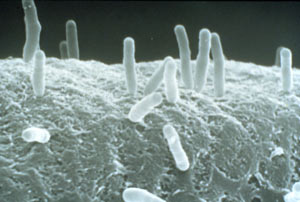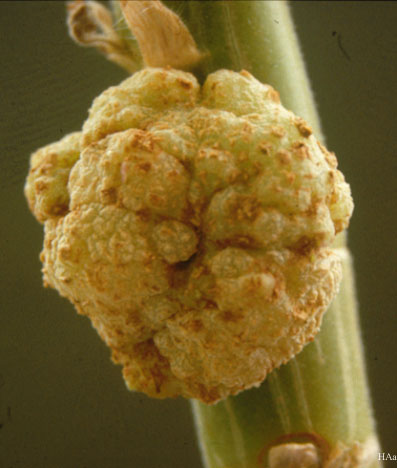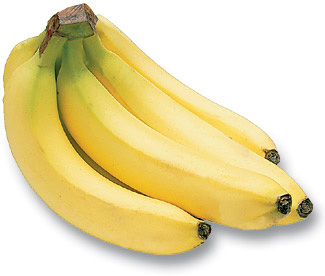Agrobacterium: Difference between revisions
No edit summary |
No edit summary |
||
| (2 intermediate revisions by the same user not shown) | |||
| Line 1: | Line 1: | ||
{ | {{Curated}} | ||
{{Biorealm Genus}} | |||
[[Image:Agro1.JPG|frame|''Agrobacterium'' ''tumefaciens'' cells attached to a plant cell. From [http://www.genomenewsnetwork.org/articles/12_01/A_tumefaciens_genome.shtml Genome News Network and Martha Hawes].]] | [[Image:Agro1.JPG|frame|''Agrobacterium'' ''tumefaciens'' cells attached to a plant cell. From [http://www.genomenewsnetwork.org/articles/12_01/A_tumefaciens_genome.shtml Genome News Network and Martha Hawes].]] | ||
| Line 9: | Line 8: | ||
| width="802" height="874" bgcolor="#ffffff" valign="top" | | | width="802" height="874" bgcolor="#ffffff" valign="top" | | ||
<h2>Classification</h2><br style="clear:both" /><h3>'''Higher order taxa:'''</h3> Bacteria; Proteobacteria; Alphaproteobacteria; Rhizobiales; Rhizobiaceae; Rhizobium/Agrobacterium group <br /><h3>'''Species: '''</h3>''Agrobacterium agile, Agrobacterium albertimagni, Agrobacterium aurantiacum, Agrobacterium larrymoorei, Agrobacterium radiobacter, Agrobacterium rhizogenes, Agrobacterium rubi, Agrobacterium tumefaciens, Agrobacterium vitis, Agrobacterium ''sp. | <h2>Classification</h2><br style="clear:both" /><h3>'''Higher order taxa:'''</h3> Bacteria; Proteobacteria; Alphaproteobacteria; Rhizobiales; Rhizobiaceae; Rhizobium/Agrobacterium group <br /><h3>'''Species: '''</h3>''Agrobacterium agile, Agrobacterium albertimagni, Agrobacterium aurantiacum, Agrobacterium larrymoorei, Agrobacterium radiobacter, Agrobacterium rhizogenes, Agrobacterium rubi, Agrobacterium tumefaciens, Agrobacterium vitis, Agrobacterium ''sp. | ||
{| | |||
| height="10" bgcolor="#FFDF95" | | |||
'''NCBI: [http://www.ncbi.nlm.nih.gov/Taxonomy/Browser/wwwtax.cgi?id=357 Taxonomy] [http://www.ncbi.nlm.nih.gov/entrez/query.fcgi?db=genomeprj&cmd=Search&dopt=DocSum&term=txid357%5BOrganism:exp%5D Genomes] | |||
|} | |||
<h2>Description and Significance<br /></h2>At the turn of the century ''Agrobacterium tumefaciens'' was identified as the causal agent in crown gall disease in dicotyledonous plants. Since then, thorough research has been done on this bacterium's mechanism of tumor induction; in addition, ''Argorbacterium'' is used in numerous research projects as a means with which to introduce new genes into the genomes of a number of plants. | <h2>Description and Significance<br /></h2>At the turn of the century ''Agrobacterium tumefaciens'' was identified as the causal agent in crown gall disease in dicotyledonous plants. Since then, thorough research has been done on this bacterium's mechanism of tumor induction; in addition, ''Argorbacterium'' is used in numerous research projects as a means with which to introduce new genes into the genomes of a number of plants. | ||
Latest revision as of 21:40, 23 July 2010
A Microbial Biorealm page on the genus Agrobacterium

ClassificationHigher order taxa:Bacteria; Proteobacteria; Alphaproteobacteria; Rhizobiales; Rhizobiaceae; Rhizobium/Agrobacterium groupSpecies:Agrobacterium agile, Agrobacterium albertimagni, Agrobacterium aurantiacum, Agrobacterium larrymoorei, Agrobacterium radiobacter, Agrobacterium rhizogenes, Agrobacterium rubi, Agrobacterium tumefaciens, Agrobacterium vitis, Agrobacterium sp.Description and SignificanceAt the turn of the century Agrobacterium tumefaciens was identified as the causal agent in crown gall disease in dicotyledonous plants. Since then, thorough research has been done on this bacterium's mechanism of tumor induction; in addition, Argorbacterium is used in numerous research projects as a means with which to introduce new genes into the genomes of a number of plants.
Genome StructureAgrobacterium tumefaciens str. C58 has an unusual chromosomal organization - it has a 2 Mb linear and a 2.8 Mb circular chromosome as well as a 206.479 kbp Ti (tumor-inducing) plasmid. The genes that cause gall formation in plants are located for the most part on the the Ti plasmid. Interestingly, if Agrobacterium is grown near its maximum temperature of about 30oC, then the plasmid is lost as well as the pathogenicity of the bacterium. The bacterium itself is still functional and can thrive in culture (Deacon). The genome of Agrobacterium vitis is currnetly being sequenced. It causes gall disease in grapes. Cell Structure and Metabolism
|


